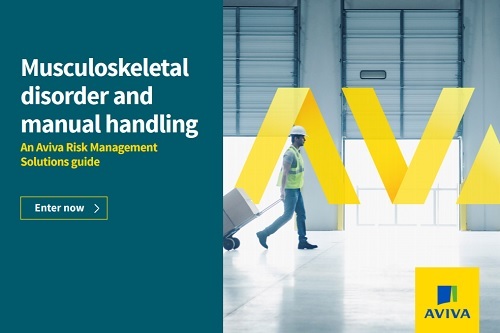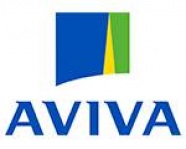Aviva publishes new guide on musculoskeletal disorder & manual handling

Authored by Aviva
Musculoskeletal risks can be found across all kinds of workplaces – from the heavy lifting on building sites to the repetitive strain of factory work or the poor posture of an office job. In fact, Musculoskeletal disorder (MSD) is one of the most prevalent work related health problems in the UK* but fortunately there’s a wealth of scientific evidence showing that small changes can make a significant difference when it comes to preventing harm. We’ve produced a new guide to outline what these can be - helping you and your clients reduce the potential impact.
We’ve only to consider our own working environments to relate to these type of risks - here are just a few factors that could make all the difference if identified and managed correctly:
Workplace design and layout
The ergonomic design aspects of a workplace and of individual workstations can have a significant impact on manual handling risks. Contributory factors to be aware of include working in confined spaces where static body postures are required for long periods or environmental factors such as low temperatures or low-level lighting. These hazards should be taken into account alongside human factors of the employees in question, such as physical capability, height, age and overall physical health. The management of manual handling hazards is the most desirable position and should always be what you’re aiming for. Achieving this requires ergonomic design criteria to be built into all capital and investment projects and procurement specifications.
Human Machine Interface
Human Machine Interface (HMI) means any situation where humans interact with a machine. This could be anything from smartphones and computers to smart wearable devices or touchscreen displays. The increased automation of operator tasks often has the benefit of removing people from hazardous tasks and environments while also increasing the productivity of the machine operator by enabling the employee to do more, faster. The potential downside is that such interfaces can lead to static postures and a reduction in physical activity, causing MSD related problems in the workforce.* This emerging risk needs to be considered carefully with good ergonomic design which takes into consideration both the employee’s physical and mental capabilities.
Workforce profile
Our UK workforce profile is changing – 36% of the current workforce is over 50, with many now continuing to work into their 70s and 80s.** One consequence of this is that workers are increasingly likely to have several chronic health conditions, of which musculoskeletal disorders may be one. Recognising this means that interventions targeted towards your workforce age profile may help MSD related conditions from developing, and businesses could see a reduction in sickness absence rates, too.
Lifestyle factors
How long do you spend sitting in a day? It’s estimated that an office worker can spend 80,000 hours of their life sitting!*** The increase in sedentary work plus an ageing workforce profile can have a significant influence on the risk of developing musculoskeletal disorders. But there’s plenty that can be done, and new technology to help. Manual Handling wearable sensor technology from our specialist partner BACK-TRACK, is one example of how this can be effectively monitored.
Aviva’s approach to these risks centres around the expertise of our risk management team, and guidance aligns to the fundamentals of effective MSD management:
Risk Assessment
- Undertaking detailed assessments on manual handling and ergonomic hazards is essential to understanding hazards and developing an action plan.
Risk Control
- Taking ‘reasonably practicable’ steps to control and mitigate risk is the key to success – too often MSD issues are dismissed as trivial or ‘just part of the job’.
Risk Profiling
- Look to improve incident investigation and trend analysis to identify ‘hot spots’ in order to develop targeted risk reduction measures.
“At Aviva, our proactive prevention philosophy to risk management allows us to help our clients effectively manage the risks that may cause musculoskeletal injuries. The prevention of manual handling injuries is a complex problem, requiring multi-disciplinary, multi-faceted approaches to mitigate the risk.” Chris Andrews, Director of Aviva Risk Management Solutions
Read our new guide here or visit the Aviva Risk Management website for further guidance and resources.
Please feel free to share with your clients directly or point them to the website.
*HSE Foresight Report 2018
**UK Parliament: The Ageing Population
*** EU-OSHA 2016
About Aviva
Aviva Insurance Limited is one of the UK’s leading insurance companies, part of the Aviva group with 34 million customers Worldwide. Aviva Insurance has been in the insurance business for more than 300 years.
In UK commercial, the insurance market remains challenging for insurance brokers and customers, due to the ongoing economic conditions. Aviva Insurance are focusing on improving our processes to ensure Aviva provide commercial customers with insurance cover at an acceptable price. Insurance brokers also recognised our excellent customer service by voting us Insurance Times General Insurer of the Year in 2012, for the second year running. youTalk-insurance sharing Aviva insurance news and video.

